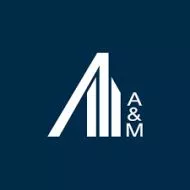- within Insolvency/Bankruptcy/Re-Structuring, Law Department Performance and Criminal Law topic(s)
- in Middle East
Organizations are increasingly recognizing the importance of Sustainable Supplier Relationship Management(SSRM) to create value, mitigate risks, enhance their brand, build stronger supplier relationships, and prepare for future challenges. Despite understanding its importance, many organizations struggle to assess their current SSRM maturity and identify actionable steps to strategically advance their practices.
The journey of integrating SSRM into an organization's fabric can indeed be complex. It's a progression from reactive measures through strategic alignment with the broader goals of the organization.
The resolution involves presenting a clear, structured maturity model for SSRM. The SSRM Maturity Model outlines stages that organizations typically navigate, starting from ad hoc and static approaches, moving through reactive and structured phases, and ideally reaching a level of continuous improvement where SSRM is deeply embedded in the organizational strategy. As organizations evolve through these stages, they can unlock the full potential of SSRM beyond compliance and cost management to include sustainable growth, innovation and a strong, positive brand image.
Understanding the Sustainable Supplier Relationship Management Maturity Model
A&M presents five stages of the SSRM Maturity Model. Each stage has a set of characteristics, activities, challenges and benefits. As you read them, try to identify where you believe your organization is currently operating along the maturity curve.
Stage 1 – Reactive
During this initial stage, organizations are primarily concerned with meeting basic compliance requirements and addressing issues as they arise. They do not have formal established policies and processes in place for managing SSRM. For example, organizations might use supplier scorecards to track basic performance metrics but would stop short of meaningful collaboration with suppliers. At this stage, supplier collaboration is typically reflected in fielding ad hoc calls and cutting purchase orders. Here, SSRM offers limited strategic benefits, and the company most likely has a higher exposure to risk.
Stage 2 – Proactive
As organizations reach this stage, they often establish formal policies to address both sustainability and supplier relationship management. However, these policies can often be siloed and are usually not aligned to broader business objectives.
At this stage of the maturity curve, the importance of sustainability starts to gain traction within the organization and among its stakeholders. Companies begin to anticipate potential issues and proactively manage SSRM-related risks. Roles and responsibilities pertaining to SSRM are assigned, and the organization begins conducting regular audits and embarking on initial sustainability initiatives with suppliers. In this earlier stage, sustainability goals often exist independent of Procurement's goals and, in certain cases, can contradict one another.
Stage 3 – Strategic
In the Strategic stage, sustainability and environmental, social and governance (ESG) objectives have been incorporated into the procurement strategy in a formal and established manner, and benefits begin to be realized.
To achieve this level of integration, organizations have often advanced several key initiatives, including developing a clear and comprehensive sustainability strategy; engaging with stakeholders to gather valuable input; investing in training and educational programs focused on sustainability; establishing robust metrics and reporting mechanisms; and, most importantly, collaborating with suppliers to advance sustainable practices (although this collaboration can sometimes be reactive in nature, resulting from an issue, customer pressure, or the need to comply with a certain regulatory requirement).
While achieving this stage represents commendable progress, it also brings about distinct challenges. One of these challenges involves ensuring that sustainability initiatives align with broader business goals and are not perceived as separate or secondary efforts. Additionally, difficulties in gaining support from senior leadership and aligning procurement strategies with overall business objectives contribute to the complexity of this stage.
Stage 4 – Advanced
In the Advanced maturity stage, organizations have fully incorporated SSRM into well-established procurement strategies. This integration is structured in a way that closely aligns with the overall enterprise risk management (ERM) strategy of the organization and emphasizes extensive collaboration with suppliers to achieve shared sustainability goals. This collaborative effort involves joint innovation projects and the co-development of sustainable products and services.
At this stage, some organizations are beginning to expand sustainable practices across all tiers of the supply chain, particularly in encouraging second- and third-tier suppliers to adopt such measures. Larger organizations will also start to engage certain suppliers to begin integrating robust sustainability criteria into their own supplier selection processes to further strengthen the supply chain.
Competitive advantage, cost savings, efficiency gains and stronger, mutually beneficial supplier relationships may be primary benefits that can be expected by organizations that reach this stage.
Stage 5 – Transformational
In the Transformational maturity stage, organizations have fully integrated advanced analytics, real-time monitoring and feedback loops to continuously improve their SSRM practices. SSRM is not a separate process, but rather is deeply embedded in the organization's culture and overall strategy. Here, continuous improvement — of internal processes, external collaborations and everything in between — is key.
Reaching this level of maturity in SSRM brings about ten significant benefits:
- Industry leadership and influence
- Maximized innovation and product development
- Enhanced organizational resilience
- Unmatched brand loyalty and reputation
- Superior talent attraction and retention
- Deep stakeholder trust and engagement
- Long-term financial performance
- Positive environmental and social impact
- Global alignment with sustainability goals
- Creation of shared value
Using the Sustainable Supplier Relationship Management Maturity Model as a guide, organizations can provide a powerful path toward innovation, resilience and value creation in line with overall risk management posture and business strategies. Doing so will help to further integrate sustainability initiatives into the core of the organization's operations and demonstrate their value to the overall business strategy, not just the procurement function. Failure to integrate sustainability into supplier operations may result in organizations falling behind their competitors, potentially leading to a loss of market share, revenue and investment. Where does your organization stand?
Originally published 17 October 2024
The content of this article is intended to provide a general guide to the subject matter. Specialist advice should be sought about your specific circumstances.




